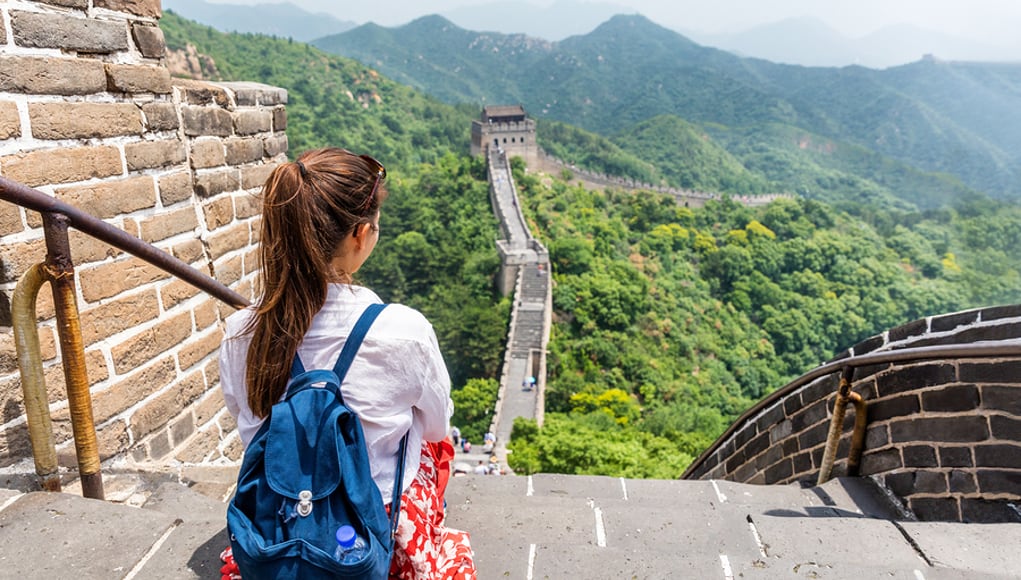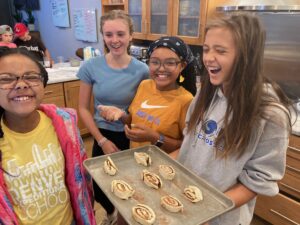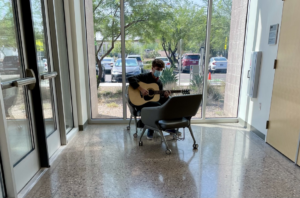3 Quick Tips and 40+ Resources for Globalizing Your Learner Experiences

In honor of International Education Week, we’re bringing you a series of blogs that celebrate the benefits of global competencies, international education and cultural exchanges. Stay tuned for more like this throughout the week!
The air we breathe. The clothes we wear. The food we eat. The medicines we take. The names we have. The threats we face. We are all connected to the world, intimately and inextricably. But how well prepared are our students to function within its complexities? To thrive amidst its ambiguities? To solve its greatest challenges?
Our job as educators is to prepare the next generation of global citizens, a legion of globally competent human beings who investigate the world, consider and value a diversity of perspectives, communicate effectively, and take action. But where do we start? How can we globalize our learner experiences to nurture the skills, dispositions and competencies that our students need most?
Regardless of whether you are just beginning your global education journey or have been engaging with global education for years, you will find something relevant in these three bold strategies for globalizing your learner experiences.
Tip #1: Take a Dare
Dare yourself to integrate the world into your classroom using all 20 of the following resource ideas. Try incorporating one a week or, if you want to double down on your dare, try one a day.
- Global Newspaper Articles
- Global Newspaper Headlines
- Global News Videos
- Global Photographs
- Global Music
- Global Art
- Global Fiction
- Global TED Talks
- Global Maps
- Global Classroom Partnerships
- Skype an Expert/Speaker
- Virtual Reality
- Global Documentary
- Global Film
- Global Blogs
- Global Field Trips (real and virtual)
- Global Games
- Sustainable Development Goals
- Global Data/Statistics
- Global Poetry
Note: While there are many resources for each item on the list, I hotlinked one resource per item as a starting point.
Think creatively about how you can incorporate these resource ideas into your learner experiences. You don’t have to worry about carving out time for something new because you decide the “size” of the global experience you want to incorporate: small, medium, or large.
- Small example: if your students are studying Macbeth, ask them to scan both local and global newspaper headlines and identify three that connect to a character, theme or event in the play. Encourage students to ask questions, seek answers, and make connections.
- Medium example: if your students are studying the Holocaust, take them on a virtual tour of Auschwitz or the Anne Frank House. Students use Google Earth to explore these landmarks and where they are situated. Extend their investigation to other genocides (Armenian, Bosnian and Rwandan). They ask questions, explore answers, and make connections.
- Large example: if your students are studying climate pollution and, for example, focusing on plastics, create a classroom connection to a school in Kenya, Rwanda or South Africa where they are taking active steps to combat plastic pollution. Students collaborate on researching the issue, conducting science experiments, and developing solutions.
Tip #2: Search for that special someone. Or something.
A common misperception of global education is that is it only outward looking. To the contrary, global education is glocal and focuses on the connections between the global and the local.
The fun part for educators is searching for that special glocal partnership for your learner experience that deepens students’ understanding of the subject while positioning it within a larger context.
With few exceptions, everything that your students study can be partnered with something or someone glocally. Again, you decide the “size” of the global experience you want to incorporate: small, medium or large.
- Small example: if your students are learning about linear equations and graphing, partner it with real data about global food challenges in the past, present, and future. Encourage students to ask questions, seek answers and make connections.
- Medium example: If your students are learning about the American Civil War, partner it with the Syrian Civil War. Students read articles about it in the Syrian press and compare/contrast it to the American Civil War. Take them on a virtual tour of the Syrian war zone, where they can make observations, gather information, generate questions and make connections to the American Civil War.
- Large example: If your students are studying The Odyssey, partner it with deep and authentic learning about real life odysseys – such as immigrant, migrant, and refugee odysseys – involving both America and other countries. Students contemplate the past while actively exploring the present and future. They interact with authentic sources as they ask questions, explore answers, consider a variety of perspectives, and make connections to Odysseus and his epic journey.
Tip #3: Fuel the fire
When you and your students investigate the world, you will witness the spark of excitement and curiosity transition to a flame as they wonder, “What can I do? How can I make a difference?”
This is an educator’s dream! Your students have the power to be changemakers, to actively envision and implement solutions to glocal challenges. Encourage them. Empower them. Incorporate taking action into your curriculum. Fuel their fire and watch it grow into an inferno.
Taking action comes in all shapes and sizes, depending on your students, your curriculum, and your bandwidth. Again, you decide the “size” of the global experience you want to incorporate: small, medium, or large.
- Small example: If you would like to get students thinking about small day-to-day actions they can take to address the U.N.’s Global Goals, incorporate The Lazy Person’s Guide to Saving the World. Encourage them to explore further, ask questions about the Global Goals, and seek answers. Use this as a gateway into deeper global learning.
- Medium example: If your students are studying the American Civil Rights Movement or reading Narrative of the Life of Frederick Douglass, partner it with the 4th Global Goal, Quality Education. Students learn about modern global inequalities in education and join organizations that are taking action for education equality. Connect students to resources and like-minded activists, and provide the impetus for them to get involved.
- Large example: If your students are studying biomes and/or weather, learning about engineering principles, or reading A Long Walk to Water, guide them to create and implement their own water initiative. Educate them about the characteristics of moral leaders. Introduce them to other successful global youth activists. Connect them to local and global sources of knowledge, inspiration and guidance. And then watch the fire spread…
As you design globalized curriculum for your students, embrace your bold and adventurous spirit. Dare yourself to try something new. Search for that special someone or something. Fuel the fire. Unleash your students on the world, ready to collaborate with global partners, ask the tough questions, complicate their thinking with complex answers, and join forces to truly effect positive change.
For more, see:
- Educating for Global Competence: 6 Reasons, 7 Competencies, 8 Strategies, 9 Innovations
- Review: Global Education Guidebook
- Designing Student Projects for Global Readiness
- 3 Reasons to Expect the Unexpected… and What To Do About It
Deanne Moore is a veteran global educator and an instructor for the U.S. Department of State’s Teachers for Global Classrooms Program global education course. You can find her on Twitter at @DeanneMMoore.
Stay in-the-know with all things EdTech and innovations in learning by signing up to receive the weekly Smart Update.






0 Comments
Leave a Comment
Your email address will not be published. All fields are required.